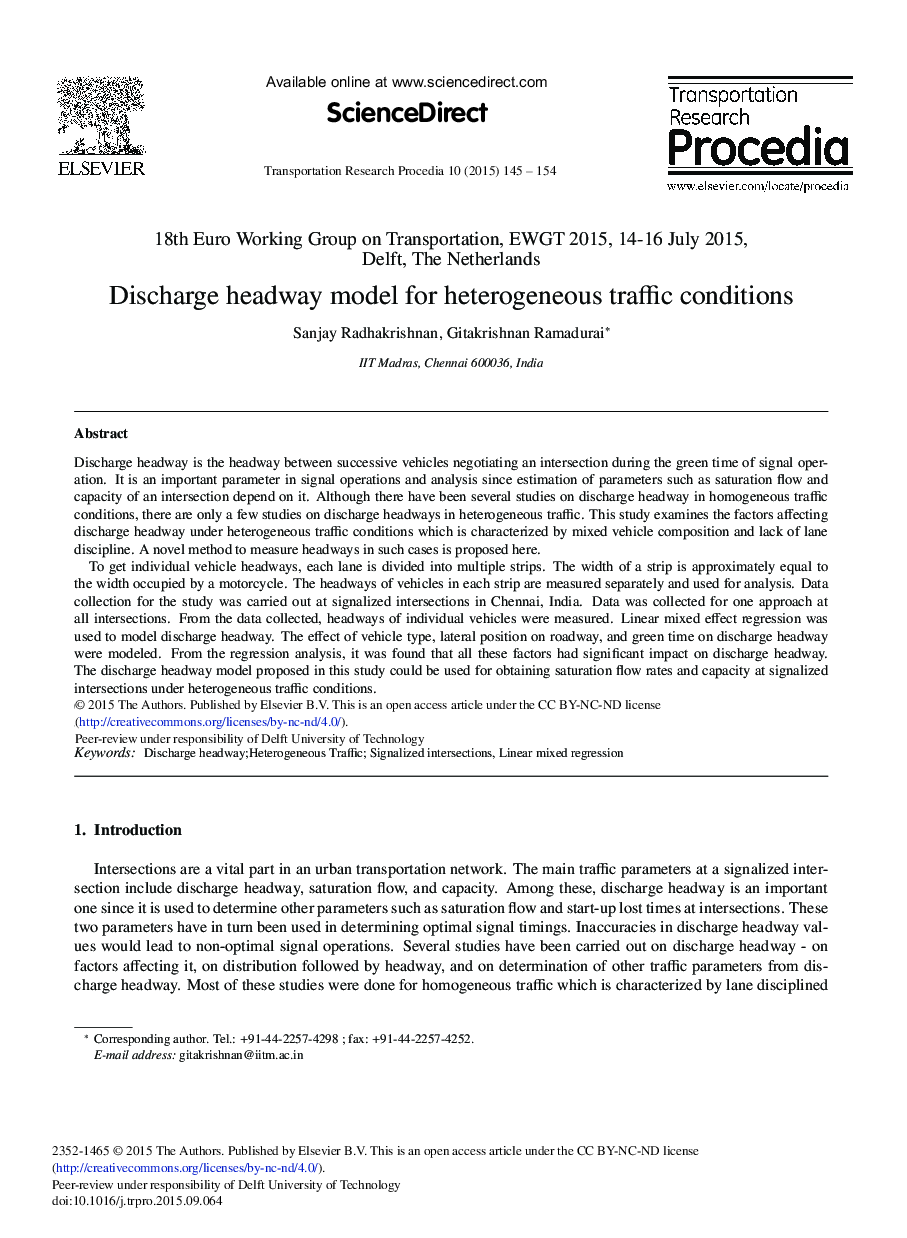| کد مقاله | کد نشریه | سال انتشار | مقاله انگلیسی | نسخه تمام متن |
|---|---|---|---|---|
| 1106824 | 1488285 | 2015 | 10 صفحه PDF | دانلود رایگان |
Discharge headway is the headway between successive vehicles negotiating an intersection during the green time of signal oper- ation. It is an important parameter in signal operations and analysis since estimation of parameters such as saturation flow and capacity of an intersection depend on it. Although there have been several studies on discharge headway in homogeneous traffic conditions, there are only a few studies on discharge headways in heterogeneous traffic. This study examines the factors affecting discharge headway under heterogeneous traffic conditions which is characterized by mixed vehicle composition and lack of lane discipline. A novel method to measure headways in such cases is proposed here.To get individual vehicle headways, each lane is divided into multiple strips. The width of a strip is approximately equal to the width occupied by a motorcycle. The headways of vehicles in each strip are measured separately and used for analysis. Data collection for the study was carried out at signalized intersections in Chennai, India. Data was collected for one approach at all intersections. From the data collected, headways of individual vehicles were measured. Linear mixed effect regression was used to model discharge headway. The effect of vehicle type, lateral position on roadway, and green time on discharge headway were modeled. From the regression analysis, it was found that all these factors had significant impact on discharge headway. The discharge headway model proposed in this study could be used for obtaining saturation flow rates and capacity at signalized intersections under heterogeneous traffic conditions.
Journal: Transportation Research Procedia - Volume 10, 2015, Pages 145-154
